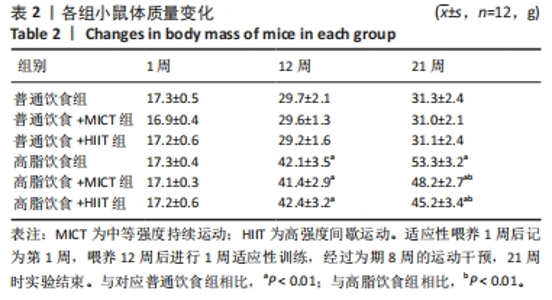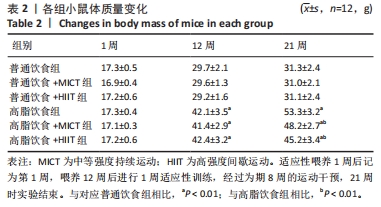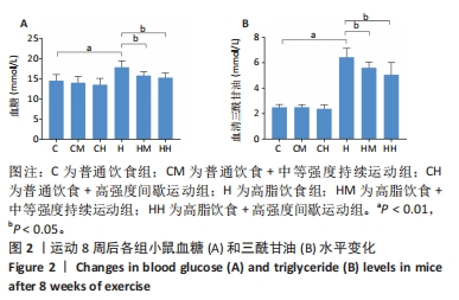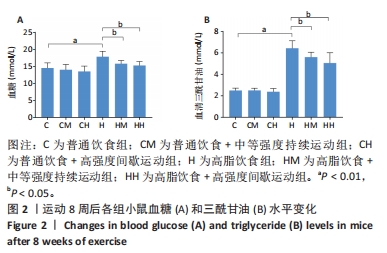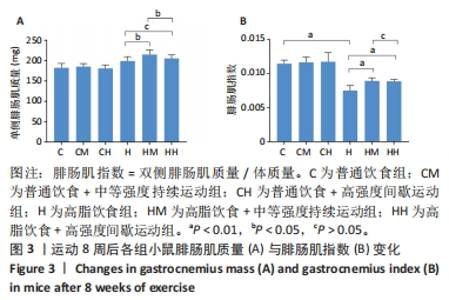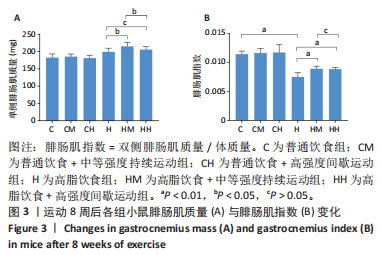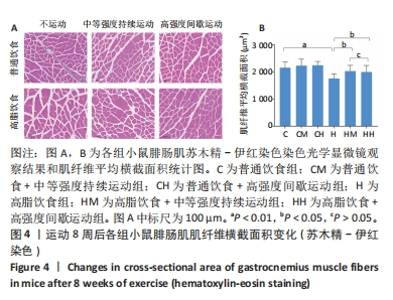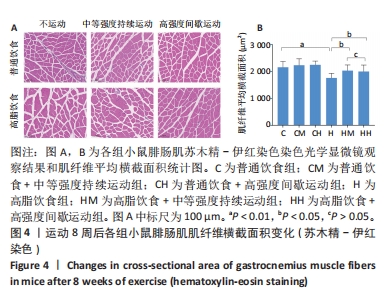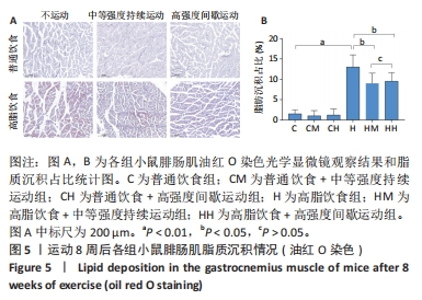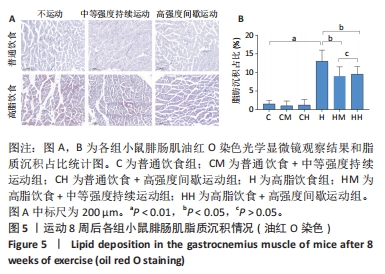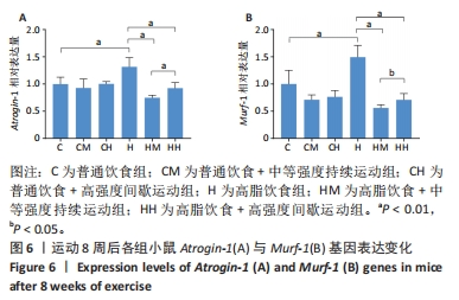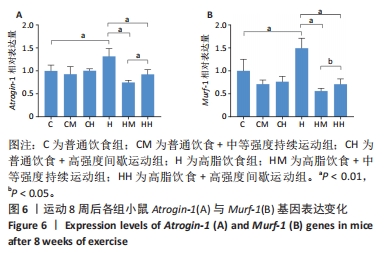[1] LUSTIG RH, FENNOY I. The history of obesity research. Horm Res Paediatr. 2022;95(6):638-648.
[2] POLYZOS SA, MARGIORIS AN. Sarcopenic obesity. Hormones (Athens). 2018;17(3):321-331.
[3] KOLIAKI C, LIATIS S, DALAMAGA M, et al. Sarcopenic obesity: epidemiologic evidence, pathophysiology, and therapeutic perspectives. Curr Obes Rep. 2019;8(4):458-471.
[4] WANG M, TAN Y, SHI Y, et al. Diabetes and sarcopenic obesity: pathogenesis, diagnosis, and treatments. Front Endocrinol (Lausanne). 2020;11:568.
[5] 罗琳,杨金鹏,王松涛,等.肥胖性肌肉萎缩的分子机制研究进展[J].中国康复理论与实践,2017,23(5):553-557.
[6] 郭婧雅,张萍,赵雨菡,等.肥胖诱导的骨骼肌萎缩机制研究进展[J].生物技术进展,2022,12(6):861-868.
[7] CENTO AS, LEIGHEB M, CARETTI G, et al. Exercise and exercise mimetics for the treatment of musculoskeletal disorders. Curr Osteoporos Rep. 2022;20(5):249-259.
[8] VILLELLA M, VILLELLA A. Exercise and cardiovascular diseases. Kidney Blood Press Res. 2014;39(2-3):147-153.
[9] SU L, FU J, SUN S, et al. Effects of HIIT and MICT on cardiovascular risk factors in adults with overweight and/or obesity: a meta-analysis. PLoS One. 2019;14(1):e0210644.
[10] GRIPP F, NAVA RC, CASSILHAS RC, et al. HIIT is superior than MICT on cardiometabolic health during training and detraining. Eur J Appl Physiol. 2021;121(1):159-172.
[11] MACINNIS MJ, GIBALA MJ. Physiological adaptations to interval training and the role of exercise intensity. J Physiol. 2017;595(9):2915-2930.
[12] HONG W, CHENG W, ZHENG T, et al. AHR is a tunable knob that controls HTLV-1 latency-reactivation switching. PLoS Pathog. 2020;16(7): e1008664.
[13] GUMUCIO JP, MENDIAS CL. Atrogin-1, MuRF-1, and sarcopenia. Endocrine. 2013;43(1):12-21.
[14] 范真.乙酰转移酶P300介导的自噬在肥胖性骨骼肌萎缩中的作用及机制研究[D].重庆:重庆医科大学,2020.
[15] GUO A, LI K, TIAN HC, et al. FGF19 protects skeletal muscle against obesity-induced muscle atrophy, metabolic derangement and abnormal irisin levels via the AMPK/SIRT-1/PGC-α pathway. J Cell Mol Med. 2021; 25(7):3585-3600.
[16] HASAN MM, SHALABY SM, EL-GENDY J, et al. Beneficial effects of metformin on muscle atrophy induced by obesity in rats. J Cell Biochem. 2019;120(4):5677-5686.
[17] ARBOLEDA-SERNA VH, FEITO Y, PATIÑO-VILLADA FA, et al. Effects of high-intensity interval training compared to moderate-intensity continuous training on maximal oxygen consumption and blood pressure in healthy men: a randomized controlled trial. Biomedica. 2019;39(3):524-536.
[18] WOOD G, MURRELL A, VAN DER TOUW T, et al. HIIT is not superior to MICT in altering blood lipids: a systematic review and meta-analysis. BMJ Open Sport Exerc Med. 2019;5(1):e000647.
[19] RYAN BJ, SCHLEH MW, AHN C, et al. Moderate-intensity exercise and high-intensity interval training affect insulin sensitivity similarly in obese adults. J Clin Endocrinol Metab. 2020;105(8):e2941-e2959.
[20] CAO M, QUAN M, ZHUANG J. Effect of high-intensity interval training versus moderate-intensity continuous training on cardiorespiratory fitness in children and adolescents: a meta-analysis. Int J Environ Res Public Health. 2019;16(9):1533.
[21] RAMOS JS, DALLECK LC, TJONNA AE, et al. The impact of high-intensity interval training versus moderate-intensity continuous training on vascular function: a systematic review and meta-analysis. Sports Med. 2015;45(5):679-692.
[22] HAWLEY JA, LUNDBY C, COTTER JD, et al. Maximizing cellular adaptation to endurance exercise in skeletal muscle. Cell Metab. 2018;27(5):962-976.
[23] SCHIAFFINO S, DYAR KA, CICILIOT S, et al. Mechanisms regulating skeletal muscle growth and atrophy. FEBS J. 2013;280(17):4294-314.
[24] SANCHEZ AM, CANDAU RB, Bernardi H. FoxO transcription factors: their roles in the maintenance of skeletal muscle homeostasis. Cell Mol Life Sci. 2014;71(9):1657-1671.
[25] SANDRI M, SANDRI C, GILBERT A, et al. Foxo transcription factors induce the atrophy-related ubiquitin ligase atrogin-1 and cause skeletal muscle atrophy. Cell. 2004;117(3):399-412.
[26] LINK W. Introduction to FOXO Biology. Methods Mol Biol. 2019;1890:1-9.
[27] OREA-SOUFI A, PAIK J, BRAGANÇA J, et al. FOXO transcription factors as therapeutic targets in human diseases. Trends Pharmacol Sci. 2022; 43(12):1070-1084.
[28] LEE S, DONG HH. FoxO integration of insulin signaling with glucose and lipid metabolism. J Endocrinol. 2017;233(2):R67-R79.
[29] Pedersen BK. Muscle as a secretory organ. Compr Physiol. 2013;3(3): 1337-1362.
[30] ZHANG L, LV J, WANG C, et al. Myokine, a key cytokine for physical exercise to alleviate sarcopenic obesity. Mol Biol Rep. 2023;50(3): 2723-2734.
[31] SEVERINSEN MCK, PEDERSEN BK. Muscle-organ crosstalk: the emerging roles of myokines. Endocr Rev. 2020;41(4):594-609.
|
